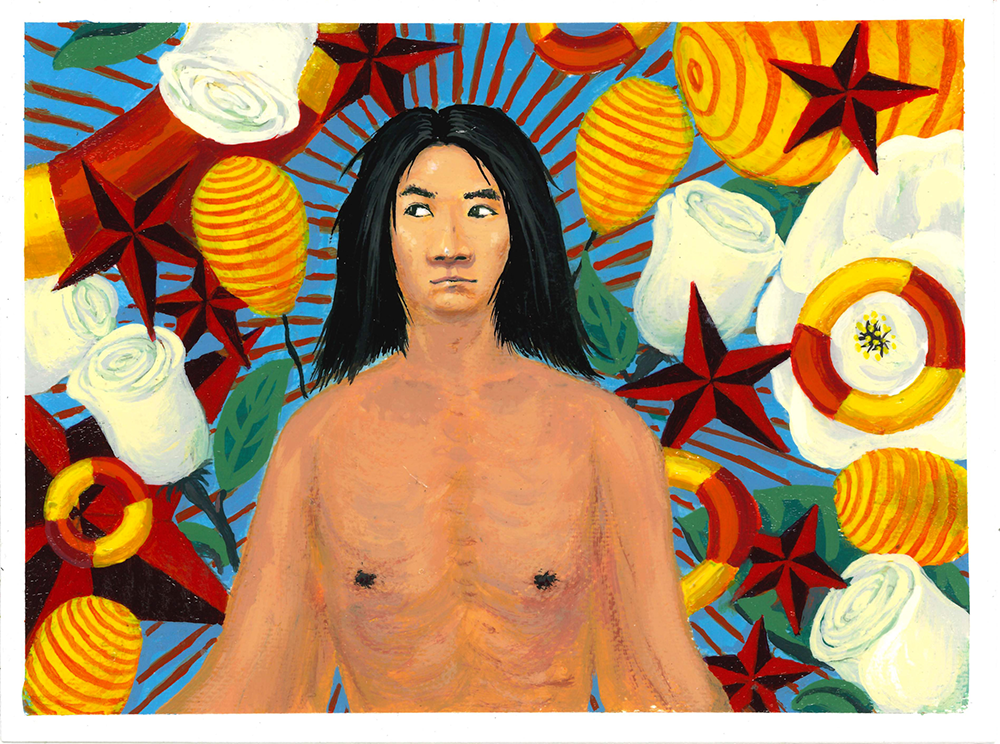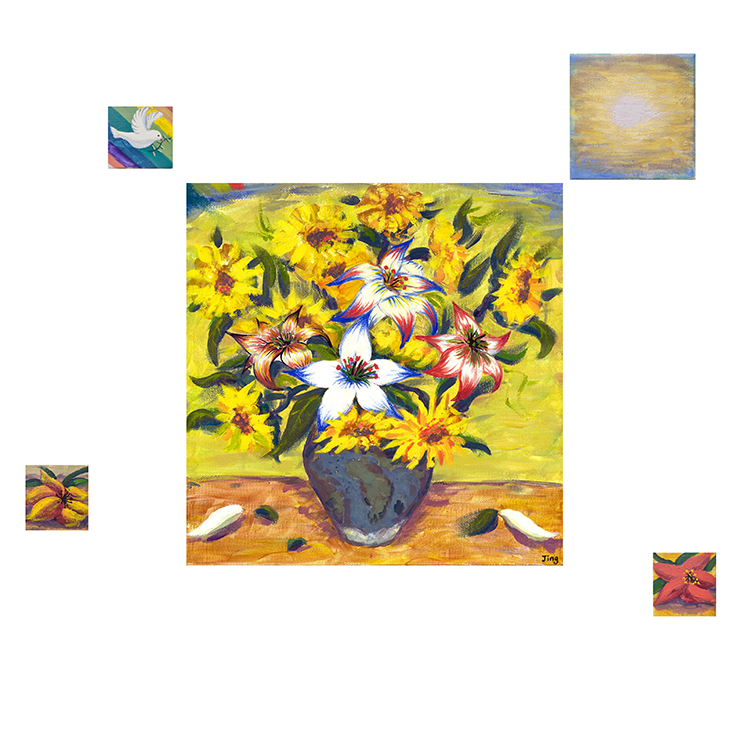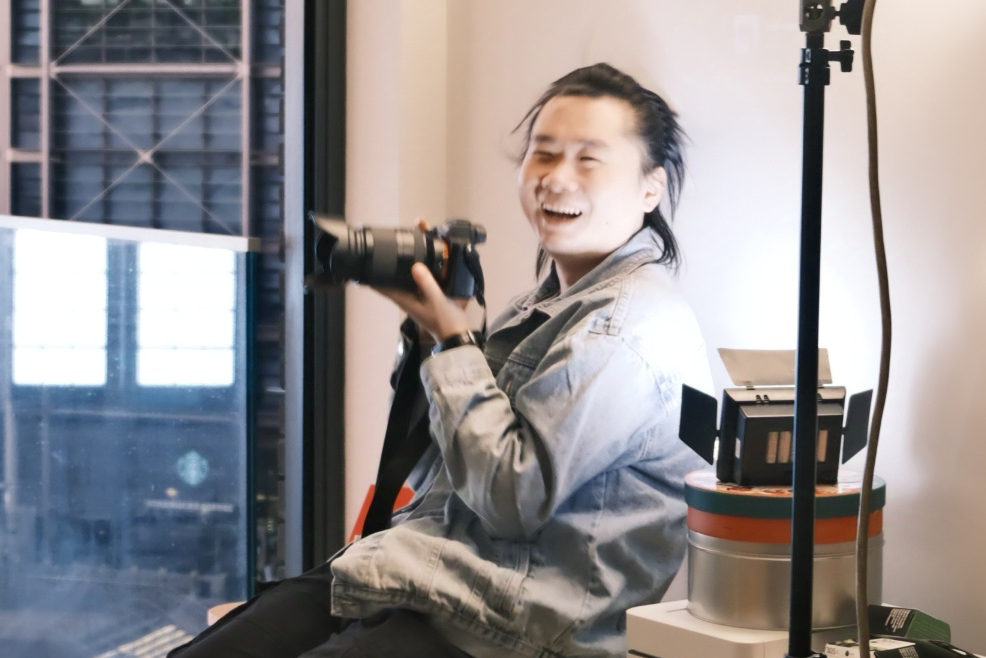Jing Luchuan, a visual content artist and educator based in London. My work explores self-identity, societal structures, and political ideologies, drawing from personal and cultural experiences. Through painting, film, and design, I aim to spark thought and connect with viewers on resilience, unity, and introspection themes.
Born: China
Now: London, United Kingdom
@jingluchuan | Vimeo
INTERVIEW
How would you describe your painting style, and how has it evolved throughout your career?
My painting style is a fusion of surrealism and symbolic realism, focusing on the power of visual metaphor to convey complex socio-political and personal themes. Early in my career, my work was more straightforward in its visual language, heavily inspired by realism and direct narratives. However, as my artistic voice evolved, I incorporated surrealist elements, layered symbolism, and more experimental compositions. This change reflects a shift in my focus: from examining personal themes to exploring the broader impact of societal ideologies on individual identity. My art has gradually become a space where contrasting elements—like purity and authority, nostalgia and scepticism—coexist to reflect the contradictions within societal structures. Through these layers, I seek to create a dialogue with viewers, prompting them to question how external forces shape who we are and how we see ourselves.

What techniques or materials do you use in your paintings, and what do you aim to convey through them?
I primarily work with acrylics on canvas and paper, occasionally using pencil and mixed media to add texture and depth. Acrylics allow me to layer colours and create bold contrasts that highlight the emotional tension within my themes. I often incorporate symbolic elements with a specific meaning that contribute to a larger narrative. For instance, in my painting series Rhapsody, the white roses symbolise purity and fragility, while newspapers signify authority and the weight of public perception. My painting series Harmony technique blends traditional Chinese cultural motifs with Western artistic influences, aiming to convey a sense of internal conflict between personal identity and collective ideology. Through these visual symbols, I strive to create a sense of reflection and critique, encouraging viewers to question the ideologies and systems that govern their lives.

What inspired you to start the “Rhapsody” series? What main ideas did you intend to communicate with this series?
The Rhapsody series was inspired by my observations of the psychological impact of political ideology on individuals, especially in the context of modern China. Growing up in a politically charged environment, I often felt a tension between personal identity and societal expectations. In Rhapsody, I use surrealist distortions of human figures and symbols of communism—like navy uniforms, red five-pointed stars, and Communist emblems—to illustrate this conflict. The characters in this series often have sceptical or questioning gazes, which reflect the struggle for self-awareness in a world that demands conformity. I aimed to portray the complexity of individual growth amid the pressures of collective identity and indoctrination. By presenting the process of being shaped by one’s environment yet seeking authenticity, Rhapsody challenges viewers to consider how political and societal systems impact their sense of self.

What are the main messages or philosophical themes you explore in the “Make Flowers, Not War” series?
The Make Flowers, Not War series is my artistic plea for peace and unity in a divided world. In this series, I’ve used vibrant floral motifs—sunflowers, lilies, and other multicoloured blooms—to symbolise optimism, resilience, and transformation. Inspired by Van Gogh’s expressive florals, these flowers serve as metaphors for hope and reconciliation. I combine these with the colours of national flags of countries in conflict, emphasising the need for empathy and understanding across borders. The central vase motif, where the earth is blended with the vessel, symbolises the interconnectedness of humanity and nature, a reminder that our lives are all intertwined. Faded reds in smaller canvases reference the collapse of political systems like the Soviet Union and East Germany, underscoring the fragility of ideologies that once seemed unbreakable. Through this series, I aim to convey that art has the power to transcend conflict and inspire collective healing, advocating for a world where unity and empathy triumph over division.

In your opinion, how do these series reflect broader themes, such as the beauty of human experience, social change, and peacemaking?
My works in Rhapsody and Make Flowers, Not War reflect a broader perspective on the complexities of the human experience. In Rhapsody, I focus on the individual’s internal battle to retain authenticity in a politically charged world. This series illustrates the beauty and challenge of self-awareness as a form of quiet rebellion, a theme that resonates universally. It invites viewers to consider how we navigate our unique journey through societal pressures and ideological expectations. In Make Flowers, Not War, I aim to capture the potential for social change and peacemaking through art. This series celebrates humanity’s resilience and beauty’s power to inspire empathy. By using flowers as symbols of peace, I strive to remind viewers of the healing possibilities that art can bring, particularly in times of division. Together, these series highlight the dual nature of human experience: the individual search for identity and the collective hope for harmony.

Luchuan, which projects that you’ve participated in have resonated with you the most, and why?
One of the most impactful projects I’ve participated in was the Pride in London events in 2023 and 2024, where I was the volunteer photographer. As an LGBTQ+ artist, these experiences were deeply personal. They allowed me to celebrate my community’s diversity and resilience through visual storytelling, capturing the vibrancy, joy, and solidarity that define Pride. Being part of such a significant cultural event allowed me to contribute to celebrating LGBTQ+ identities and amplify the voices and stories that often go unheard. The experience resonated with me artistically and reinforced my belief in art as a medium for representation and inclusivity. This project helped me reflect on my identity and the importance of using my work to create spaces for visibility, empowerment, and unity.

Is there a message or thought you would like to share with aspiring artists?
For aspiring artists, embrace the power of your unique perspective and let your personal experiences guide your work. Art is an exploration of pushing boundaries and challenging yourself and others. Please don’t shy away from complex subjects; view them as opportunities for meaningful dialogue and connection. Authenticity in art comes from a willingness to confront both beauty and discomfort. Remember, your voice is powerful, and art can be a transformative tool for yourself and those who view it. Stay curious, stay true to your vision, and trust that your journey as an artist is as valuable as your work.
Remember, your voice is powerful, and art can be a transformative tool for yourself and those who view it.
Stay curious, stay true to your vision, and trust that your journey as an artist is as valuable as your work.
“Luchuan’s work showcases a dynamic approach to contemporary art, blending bold themes with vivid visual language. By addressing challenging topics such as self-identity, power, and struggle, Luchuan invites viewers into a space of introspection and societal reflection. The use of simple forms and bright colors creates a striking contrast, amplifying the emotional resonance of each piece.
However, while the “Make Flowers, Not War” principle aligns with an anti-violence ethos, the artworks occasionally risk oversimplifying complex issues. Nonetheless, Luchuan’s pieces make a powerful visual impact, effectively communicating a call for peace and personal expression.“
Anna Ponomarenko, Founder